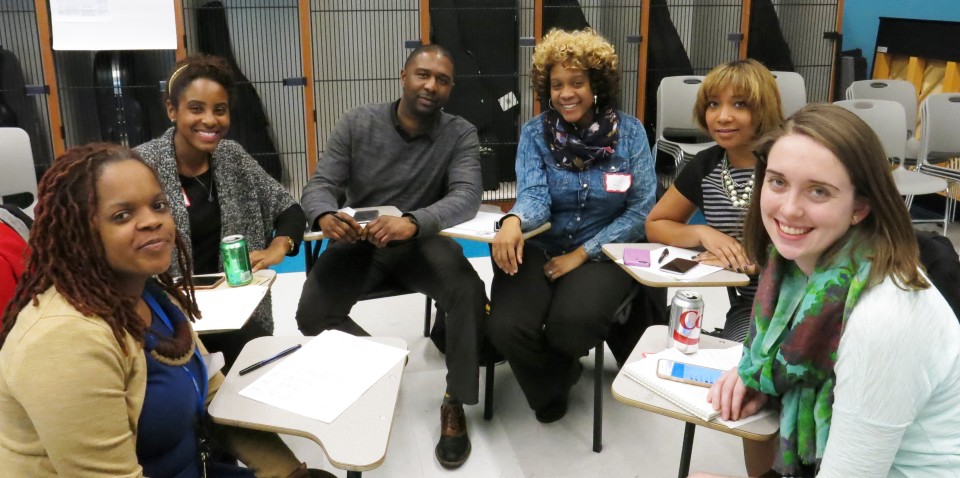Kelly Miller Incorporates Family Engagement into Grade Level Meetings
It’s no secret that teachers never have enough time — they not only have to manage packed teaching schedules but also create lesson plans, communicate with parents, and ensure all students’ needs are being met. With so much on their minds, teachers often look forward to grade level meetings. That’s because these meetings provide a dedicated — and much-needed — space for teachers to pause, plan, and reflect on their practice. At Kelly Miller Middle School, a DCPS school in Ward 7, family engagement is such a priority for teachers and for the school leadership that it takes center stage at these important meetings.
Sitting in on a seventh grade team meeting, it becomes clear how important family engagement is at Kelly Miller. Just as teachers need a space to pause and reflect on their instruction, they need a space to reflect on their family engagement practices and a dedicated space to get this work done. At Kelly Miller, the first 15 minutes of the meetings are set aside for teachers to communicate with parents, and teachers do just that. While one teacher was calling a parent, other teachers were sending text messages and announcements through Remind 101. One teacher sent a class-wide reminder about an upcoming test.
Mr. Richardson, the seventh grade Assistant Principal, shared why he decided to dedicate this time to ongoing communications: “Teachers find it useful to have an uninterrupted and dedicated block of time to do their ongoing communications…it keeps the momentum going.”
And surely, his decision is paying off. Seventh grade teacher Mr. Tumaini talks about the importance of using team time to communicate with families, sharing, “Many of the conversations we have are extremely helpful because the parents provide us with ways to serve their scholar both academically and behaviorally.”
Similarly, Ms. Anderson, an eighth grade teacher, described that in their team meetings, teachers coordinate home visits, celebrate successful home visits, and showcase examples of effective communication to families. Teachers also reflect on recent family engagement data, analyze its impact, and determine next steps that will help them achieve their larger family engagement and school-wide goals.
The simple act of incorporating family engagement into grade level meetings has impacted Kelly Miller in at least three different ways:
- On a practical level, it gives teachers uninterrupted time to communicate with parents and log their progress — helping to maintain the momentum that keeps communication ongoing.
- On a symbolic level, it signals to teachers that school leaders are placing a premium on engaging families and on supporting teachers to do so.
- On an implementation level, it helps the school institutionalize family engagement and think about it alongside other commonly prioritized practices.
Kelly Miller’s experience is a great example of how integrating family engagement into already existing structures can have a big impact.





